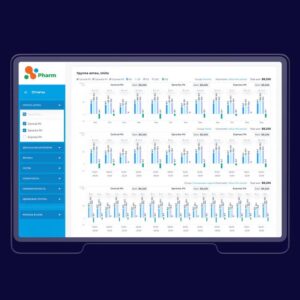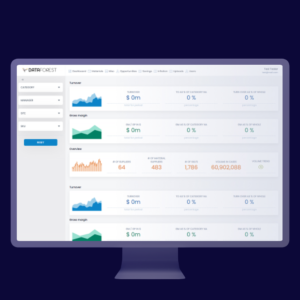- Home
- /
- Services
- /
- Data Science
- /
- Machine Learning in Data Science
Machine Learning
in Data Science
Businesses streamline their operations and gain a competitive edge by better understanding their customers and market dynamics.
Our Machine Learning Solutions
Tailored solutions analyze specific data to provide insights and fit machine learning for business’ unique goals.
Applications Of Machine Learning in Industries
Healthcare
- Medical image analysis for diagnosis and detection of diseases.
- Predictive models for patient outcomes and disease progression.
- Personalized medicine and treatment recommendation systems.
- Analyzing data from remote sensors to monitor patients’ health conditions.
Finance
- Stock market prediction and algorithmic trading.
- Customer sentiment analysis for personalized financial advice.
- Expanding access to credit for underserved populations.
- Facial and voice recognition for convenient user authentication in transactions.
Retail
- Recommender systems for personalized product recommendations.
- Demand forecasting for inventory management.
- Customer segmentation for targeted marketing campaigns.
- Price optimization and dynamic pricing strategies.
Manufacturing
- Predictive maintenance to identify equipment failures.
- Quality control and defect detection in production processes.
- Supply chain optimization and demand forecasting.
- Process optimization for improved efficiency and productivity.
Transportation
- Route optimization and fleet management for logistics companies.
- Predictive maintenance for vehicles and infrastructure.
- Traffic prediction and congestion management.
- Autonomous vehicle technologies for self-driving cars and drones.
Energy
- Energy demand forecasting and load management
- Optimization of energy generation and distribution.
- Predictive maintenance for energy infrastructure.
- Innovative grid systems for efficient energy utilization.
Travel and Hospitality
- Personalized travel recommendations and trip planning.
- Revenue management and dynamic pricing.
- Sentiment analysis for customer feedback.
- Virtual and augmented reality offer virtual tours and real-time information.
Ready to Unleash the Power of AI and Machine Learning?
ML in Action: Data Science Success Stories
Check out a few case studies that show why VOLTERA will meet your business needs.
Stock relocation solution
The client was faced with the challenge of creating an optimal assortment list for more than 2,000 drugstores located in 30 different regions. They turned to us for a solution. We used a mathematical model and AI algorithms that considered location, housing density and proximity to key locations to determine an optimal assortment list for each store. By integrating with POS terminals, we were able to improve sales and help the client to streamline its product offerings.

Client Identification
The client wanted to provide the highest quality service to its customers. To achieve this, they needed to find the best way to collect information about customer preferences and build an optimal tracking system for customer behavior. To solve this challenge, we built a recommendation and customer behavior tracking system using advanced analytics, Face Recognition, Computer Vision, and AI technologies. This system helped the club staff to build customer loyalty and create a top-notch experience for their customers.

Performance Measurement
The Retail company struggled with controlling sales and monitoring employees’ performance. We implemented a software solution that tracks sales, customer service, and employee performance in real-time. The system also provides recommendations for improvements, helping the company increase profits and improve customer service.

Supply chain dashboard
The client needed to optimize the work of employees by building a data source integration and reporting system to use at different management levels. Ultimately, we developed a system that unifies relevant data from all sources and stores them in a structured form, which saves more than 900 hours of manual work monthly.

Michelle Nguyen
Senior Supply Chain Transformation Manager Unilever, World’s Largest Consumer Goods Company
View case study →

Machine Learning Technologies
Pandas
SciPy
TensorFlow
Numpy
ADTK
DBscan
G. AutoML
Keras
MLFlow
Natural L. AI
NLTK
OpenCV
Pillow
PyOD
PyTorch
FB Prophet
SageMaker
Scikit-learn
SpaCy
XGBoost
YOLO
Ready to Cut Costs and Optimize Operations with Machine Learning?
Start Today with Our Services.
ML Implementing
Define Objectives
01
Collect Data
02
Clean Data
03
Select Algorithm
04
Build Model
05
Train and Test
06
Users' Feedback
06
Evaluate Performance
07
Users' Feedback
06
Deploy Model
08
Users' Feedback
06
Monitor Continuously
09
Users' Feedback
06
Refine Model
10
Users' Feedback
06
Challenges Addressed by Machine Learning
Our ML models continuously learn from data to improve performance over time, allowing organizations to move from reactive to proactive decision-making.







